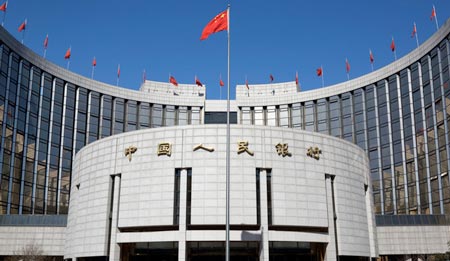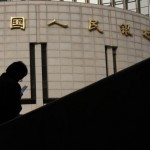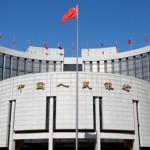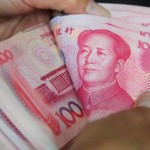The PBC Spokesman Answered More Press Questions on the RMB Exchange Rate

1. Why does the central parity of RMB exchange rate against US dollar change nearly 1.6% on 12 August from that of 11 August?
The central parity of RMB exchange rate against US dollar changed nearly 1.6% (in depreciation direction) on 12 August from that of 11 August. The main reason is that market makers make quotations based on the analysis of financial data of July newly released on 11 August and the announcement of improving central parity quotation of RMB exchange rate against US dollar on the same day.
Due to the existence of intra-day fluctuation in FX market, if the closing rate of previous day deviates significantly from the central parity of that day, the central parity of the following day will deviate from that of the previous day accordingly. The closing rate on 11 August was 6.3231 Yuan per US dollar, depreciating by 1.5% from the central parity on 11 August. This was the major reference for market makers to report quotation on 12 August. Other relevant factors include demand and supply condition in the foreign exchange market and exchange rate movement of major currencies.
It is clear that under the managed floating exchange rate regime, the fluctuation of RMB central parity is normal, reflecting not only the enhancement of the market-orientation, but also the key role played by market demand and supply in the formation of exchange rate. After the announcement of improving quotation yesterday, it will take some time for the market makers to adjust quotation and trading practices, as well as explore and find the equilibrium price of the foreign exchange market. This may lead to potentially significant fluctuation of RMB central parity in the short run. After a short period of adaptation, the intra-day exchange rate movements and the resulting central parity fluctuation will converge to a reasonably stable zone.
2. Will the central parity of RMB against US dollar converge to the equilibrium market rate?
As noted by several market observers, the improvement of central parity quotation helps reduce distortion and push central parity of RMB against US dollar towards the equilibrium market rate. Under the managed floating exchange rate regime, the market rate should fluctuate around the central parity, which serves as the benchmark exchange rate. The trading forces in the market will help correct divergence between the market rate and the central parity.
Since the third quarter of 2014, China’s significant trade surplus and the appreciation of USD against other major currencies have affected the RMB exchange rate in different directions. Market makers’ expectation diverged, and market rate deviated from the central parity for an extended period. By improving quotation of market makers, we expect market demand and supply to play a bigger role in central parity formation. This should help prevent persistent divergence between central parity and market rate, enhancing the soundness of central parity as a benchmark. In the future, the RMB central parity will be formed, primarily by reference to the equilibrium market rate, and at the same time it will play a guiding role for the market rate.
Related article: PBOC sharply cuts yuan against US dollar after weak data
3. Will RMB depreciate persistently in the future?
In view of both domestic and international economic and financial condition, currently there is no basis for persistently depreciation of RMB. First, China registered a relatively rapid economic growth in the first half of 2015, facing complex and challenging environment both in China and abroad. China’s GDP grew by 7% during the six months ending 30 June 2015, which is considerably higher than most other major economies. The relatively large fluctuation of money supply and credit aggregates in July is temporary and tractable. China will continue to pursue prudent monetary policy. Recently, major economic indicators stabilized and showed good signs, which provides a favorable macroeconomic environment for a stable RMB.
Second, China has maintained a current account surplus for a long time. In the first seven months of 2015, the trade surplus of goods reached USD 305.2 billion. This is a fundamental factor in determining the supply and demand of foreign exchange, and is also an important foundation to support the RMB exchange rate.
Third, in recently years, the RMB internationalization and opening up of domestic financial markets have accelerated. The international demand for RMB-denominated trade, investment and asset allocation is gradually increasing, which creates new momentum for stabilizing RMB exchange rate. Fourth, the USD has been strengthening for some time due to the market expectation that FOMC will raise its policy rate this year, an event that is being absorbed by the market. We believe that the market will have a more rational judgment on exchange rate after the temporary shock of a rate hike. Finally, China maintains abundant foreign exchange reserve, stable fiscal condition and a healthy financial system, which should help bolster a stable RMB exchange rate.
China is implementing the managed floating exchange rate regime based on market demand and supply. The fluctuation of exchange rate is a normal phenomenon, to which, we should take an objective view. In the future, the PBC will strive to further improve market-based formation mechanism of RMB exchange rate, maintain a normal fluctuation of RMB, and keep the exchange rate basically stable at an adaptive and equilibrium level.
Source: People’s Bank of China



























